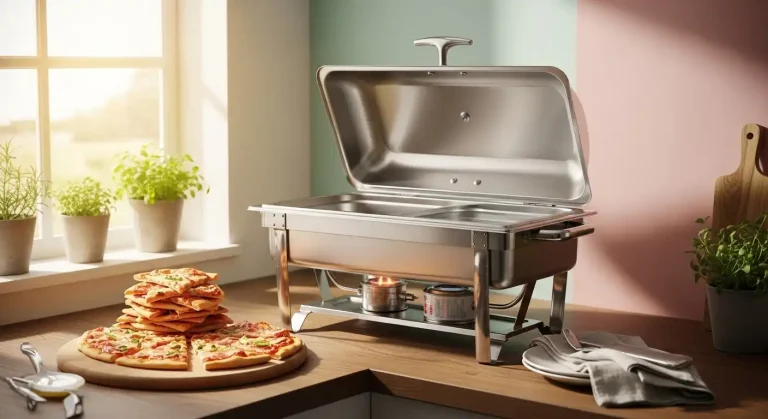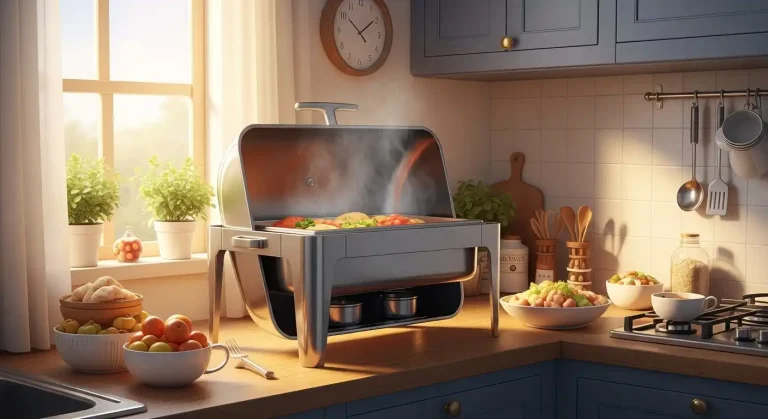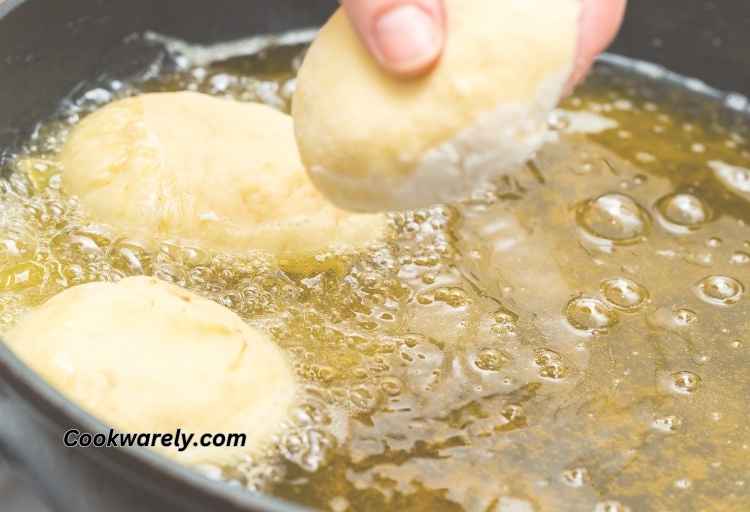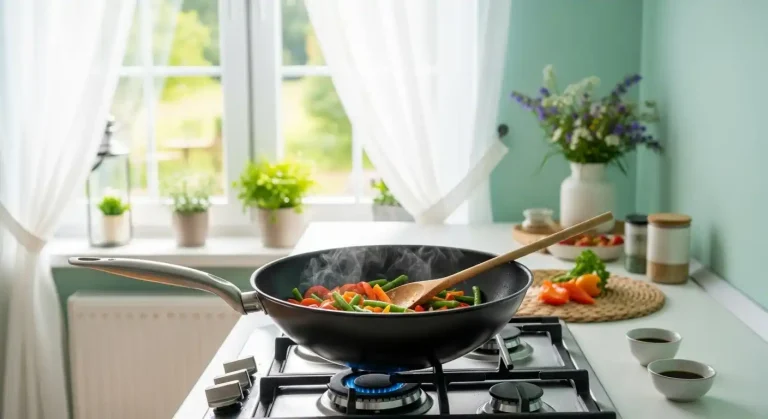What Should My Wok Patina Look Like?

A wok’s patina is the hallmark of a well-loved, well-used cooking tool.
If you’re new to cooking with a wok or curious about maintaining one, you might be wondering, What should my wok patina look like?
This dark, glossy layer isn’t just for show—it’s a functional, non-stick surface that enhances your cooking.
Let’s dive into what a wok patina is, why it matters, and how to achieve and maintain that perfect sheen.
🎄 Christmas & Year-End Amazon Deals !
Don’t miss out on the best discounts and top-rated products available right now!
*As an Amazon Associate, I earn from qualifying purchases.
Understanding Wok Patina: What Is It?

A wok patina is a seasoned layer of polymerized oil that forms on the surface of a carbon steel or cast iron wok.
This layer develops through repeated cooking and proper seasoning, creating a natural non-stick coating.
Unlike factory-applied non-stick surfaces, a patina builds over time with use, giving your wok character and functionality.
The patina protects the wok from rust, enhances its cooking performance, and imparts subtle flavors to dishes.
For anyone asking, What Should My Wok Patina Look Like?, it’s a smooth, dark coating—ranging from deep brown to black—that feels slightly slick to the touch.
What Does a Healthy Wok Patina Look Like?
A healthy wok patina isn’t perfectly uniform, especially in the early stages. Here’s what to expect:
- Color: A mature patina is typically dark brown to jet black. Newer woks may show lighter brown or bronze patches, especially in areas with less frequent oil contact.
- Texture: The surface should feel smooth and slightly glossy, not sticky or rough.
- Coverage: The patina may be uneven at first, with darker areas where you cook most often (like the center) and lighter patches on the sides.
Don’t worry if your wok doesn’t look pristine. A well-used wok often has a mottled appearance, with variations in color that tell the story of countless stir-fries, deep-fried dishes, or even popcorn made in a wok.
Why Does a Wok Patina Matter?
A good patina is more than aesthetics—it’s a game-changer for cooking.
The seasoned surface reduces sticking, making it easier to toss vegetables or sear meats without losing half your dish to the wok.
It also enhances heat distribution, crucial for high-heat cooking techniques like stir-frying.
Moreover, a patina acts as a barrier against moisture, preventing rust on carbon steel woks or cast iron woks.
For those wondering if carbon steel woks turn black, the answer is yes—that’s the patina at work.
How to Build a Wok Patina

Building a patina starts with proper seasoning. If you’re using a new wok, follow these steps to kickstart the process.
For detailed guidance, check out how to season a wok on an electric stove or how to season a carbon steel wok.
🎄 Christmas & Year-End Amazon Deals !
Don’t miss out on the best discounts and top-rated products available right now!
*As an Amazon Associate, I earn from qualifying purchases.
- Clean the Wok: Wash a new wok with soap and water to remove factory coatings. Dry thoroughly.
- Heat and Oil: Heat the wok on high until it smokes, then apply a thin layer of high-smoke-point oil. Swirl to coat evenly.
- Cool and Repeat: Let the wok cool, wipe off excess oil, and repeat the process 3–5 times.
Cooking fatty foods like bacon or stir-frying with oil over time will naturally deepen the patina.
If you’re using an induction cooktop, the seasoning process is similar but may require adjustments for even heating.
Maintaining Your Wok’s Patina

Once you’ve built a patina, maintaining it is key to keeping your wok in top shape. Here’s how:
- Clean Gently: Avoid harsh detergents or abrasive scrubbers. Use hot water and a soft sponge to clean your wok. For stuck-on food, try how to clean a cast iron wok or how to clean a wok for tips.
- Dry Thoroughly: Always dry your wok over low heat to prevent rust.
- Reapply Oil: After cleaning, apply a thin layer of oil to reinforce the patina.
Avoid cooking acidic foods like tomatoes or vinegar-based sauces for long periods, as they can strip the patina. If this happens, you may need to re-season your wok.
Common Patina Problems and Fixes
Even with care, your wok’s patina might face issues. Here’s how to troubleshoot:
- Flaky or Sticky Patina: This happens when too much oil is used during seasoning. Scrape off the sticky layer with a spatula, clean the wok, and re-season.
- Rust Spots: Small rust patches are normal, especially in humid climates. Scrub them off with steel wool and re-season the affected area.
- Uneven Patina: If your patina is patchy, keep cooking! High-heat dishes like deep-frying in a wok will help even it out over time.
For more specific issues, such as using a wok on a glass-top stove, refer to tailored guides for compatibility and care.
Does the Type of Wok Affect the Patina?
The material and shape of your wok can influence how the patina develops.
Carbon steel woks are the gold standard for patina-building due to their porous surface, which bonds well with oil.
Cast iron woks also develop a strong patina but are heavier and slower to heat.
Stainless steel woks, however, don’t form a traditional patina and are less common for authentic stir-frying.
If you’re choosing a wok, consider what size wok to buy or explore what wok to buy for your cooking needs.
Round-bottom woks, like a pow wok, may require a wok ring for stability on electric or gas stoves, which can affect how heat is distributed during seasoning.
🎄 Christmas & Year-End Amazon Deals !
Don’t miss out on the best discounts and top-rated products available right now!
*As an Amazon Associate, I earn from qualifying purchases.
Enhancing Your Cooking with a Patina
A well-seasoned wok with a robust patina opens up endless culinary possibilities. Beyond stir-fries, you can cook rice in a wok or use it as a frying pan.
The patina’s non-stick properties make it ideal for dishes like fried rice or even deep-frying.
For inspiration, explore what you can cook in a wok besides stir-fry to maximize your wok’s potential.
Patina Myths Debunked
There are some misconceptions about wok patinas that can confuse beginners:
-
Myth: A patina should be perfectly black from the start.
Reality: A new patina is often patchy and brown. It darkens with use. -
Myth: Woks are naturally non-stick.
Reality: Only a well-seasoned wok with a strong patina is non-stick. -
Myth: Dishwashers are fine for woks.
Reality: Dishwashers can strip the patina. Hand-wash only, as explained in are woks dishwasher-safe?.
Final Thoughts on Your Wok’s Patina
Your wok’s patina is a reflection of your cooking journey—each meal adds to its character.
Whether you’re stir-frying, deep-frying, or experimenting with new recipes, a healthy patina ensures better performance and durability.
By seasoning properly, cleaning gently, and cooking regularly, you’ll develop a patina that’s both beautiful and functional.
Not sure which wok to start with? Check out wok brands for healthy cooking or learn how to cook in a wok to master your technique. With patience and care, your wok’s patina will become a point of pride in your kitchen.






